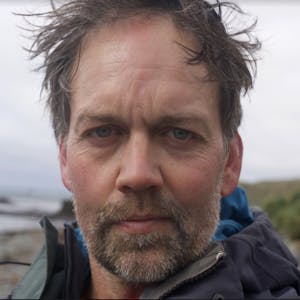Dronning Maud Land Tundra
The ecoregion’s land area is provided in units of 1,000 hectares. The conservation target is the Global Safety Net (GSN1) area for the given ecoregion. The protection level indicates the percentage of the GSN goal that is currently protected on a scale of 0-10. N/A means data is not available at this time.
Bioregion: Continental Antarctica (AN1)
Realm: Antarctica
Ecoregion Size (1000 ha):
N/A
Ecoregion ID:
119
Conservation Target:
N/A
Protection Level:
N/A
States: Antarctica
The Dronning Maud Land Tundra is known to host the largest known seabird colony in Antarctica, with somewhere between 110,000 and 180,000 breeding pairs of Antarctic Petrels on the Svarthamaren nunatak. This ecoregion is a largely inland system of ice-free areas that are patchily distributed at the western end and tend to be clumped and more connected, with larger ice-free areas, at the eastern end. There are no coastal ice-free areas in this region as an almost continuous ice shelf extends along the coastline. Also known as Queen Maud Land, this ice-free region sits in the area claimed by Norway under the Antarctic Treaty System, and it is thought to have been first discovered in the 1930s. The ecoregion is notable for its high elevation, with numerous nunataks and mountain ranges. It has a mean altitude of nearly 2000 m: three-quarters of the area are above 1,500 m and the highest point is just over 3,000 m.
The region is relatively rich in nesting seabirds with hundreds of thousands of Antarctic petrels breeding in the Svarthamaren Mountains. Snow petrels and south polar skuas are also thought to breed in this ecoregion but due to a lack of survey data reliable population estimates are rare. Due to the lack of coastal land, no Adélie penguins have been recorded breeding in this ecoregion. Mosses and lichens are relatively scarce, with 13 species of bryophyte and 33 species of lichen recorded. Invertebrate records are also relatively scarce with two tardigrades, one nematode and four mites recorded from the region.

The flagship species of the Dronning Maud Land Tundra ecoregion is the Antarctic petrel. Image credit: Creative Commons
Eight stations and one airfield camp are the only the man-made infrastructure in the region. Four of the stations (Maitri of India, Novolazarevskaya of Russia, SANAE IV of South Africa, and Troll of Norway) are operated year-round, and the other four are seasonal, opening only over the summer months. Over 300 scientists might visit the region each year at these stations, and tourism is also limited to the Russian station Novolazarevskaya with approximately 80-12 visitors each year.
There are two Antarctic Specially Protected Areas in the vicinity of this ecoregion, ASPA 142 (Svarthamaren, Mühlig-Hofmannfjella) and ASPA 163 (Dakshin Gangotri Glacier). Only one of them technically occurs on the ice-free land. ASPA 142 was designated to protect the colonies of Antarctic petrels, snow petrels and south polar skuas that breed on the Svarthamaren nunatuks. Overall, these ASPAs protect just 17% of species know to occur in this ecoregion and just 2% of species known to occur in Antarctica.
More research is urgently needed to identify vulnerable areas and species that are in need of protection. Priority conservation actions for the next decade will be to: improve the understanding of the distribution and abundance of invertebrates and plants; 2) monitor the status and trends of seabirds (particularly south polar skuas) in the region; and 3) incorporate climate science and mitigation measures into future protected area management and action plans.
Citations
- Terauds, A., S. L. Chown, F. Morgan, H. J. Peat, D. J. Watts, H. Keys, P. Convey, and D. M. Bergstrom. (2012) Conservation biogeography of the Antarctic. Diversity and Distributions 18:726-741.
- Terauds, A., and Lee, J. R. (2016) Antarctic biogeography revisited: updating the Antarctic conservation biogeographic regions. Diversity and Distributions 22:836-840.
- Wauchope, H., Shaw, J.D., & Terauds, A. (2019) A snapshot of biodiversity protection in Antarctica. Nature Communications. https://doi.org/10.1038/s41467-019-08915-6. Published online 26 February 2019.



